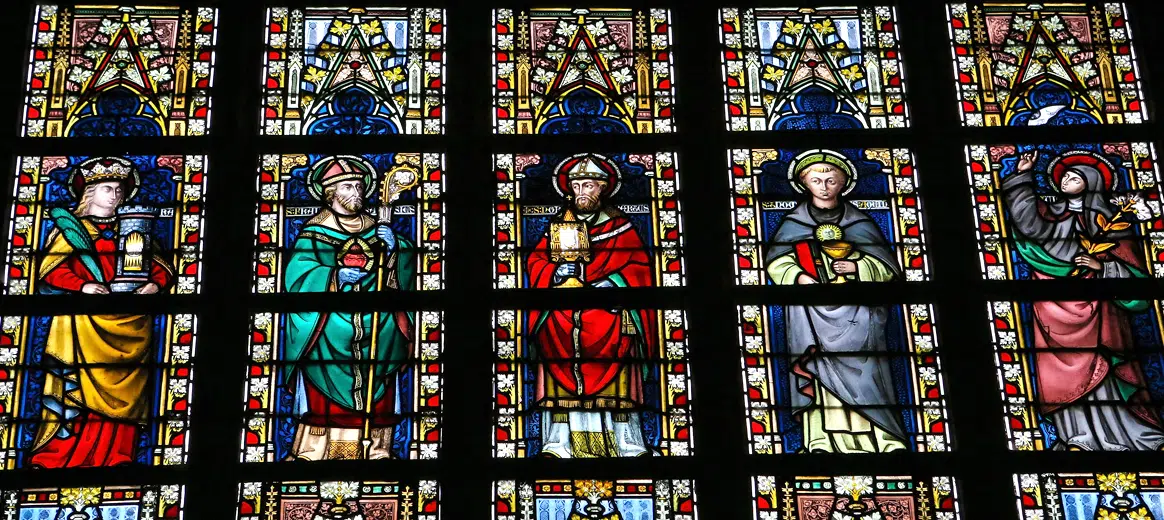St. Lucy (died c. 304)
Feast day: December 13
How St. Lucy came to be the patron of eye ailments depends on which story you prefer. One version says that during her martyrdom the executioner tore out her eyes. Another tradition tells of a pagan suitor who complimented Lucy on the beauty of her eyes; she plucked them out and handed them to him. A less grisly rationale is the name Lucy itself, which comes from the Latin word for light.
St. Lucy, along with St. Agnes, St. Agatha and St. Cecilia, is one of the four great virgin martyrs of the early church. Devotion to her has remained strong for more than 1,700 years, not only in her native Sicily but throughout the Christian world: even the overwhelmingly Protestant countries of Scandinavia celebrate the feast day of “Santa Lucia.” Nonetheless, as is the case with so many of the ancient martyrs, very few facts about the life of St. Lucy have come down to us — all we know for certain is that she was martyred during the persecution of Diocletian, probably in Syracuse, the city that has always been the center of devotion to St. Lucy.
By the fifth century, someone wrote a legendary life of St. Lucy to fill in the details. The author tells us she came from a Christian family. By the time Lucy was about 20 years old her father was already dead; and her mother, Eutychia, suffered from a chronic hemorrhage. In hope of a cure, mother and daughter traveled to Catania to the tomb of St. Agatha. The women spent the night beside the martyr’s tomb (which was the custom in the fourth century), and while they slept, St. Agatha appeared to Lucy in a dream. Calling Lucy “sister,” St. Agatha assured her that her mother had been healed. Then the saint said that just as she was famous and revered in her native Catania, Lucy would be famous and revered in her home, Syracuse.
The next morning Eutychia was overjoyed to find that she had been cured. Lucy took this opportunity to ask her mother to let her break off her betrothal to a young pagan and consecrate her virginity to Christ. Eutychia agreed, and mother and daughter returned home to Syracuse where they distributed Lucy’s dowry to the poor.
Angry and resentful that he had been jilted. Lucy’s fiancé denounced her as a Christian to the local magistrate. Operating on the principle of let the punishment fit the crime, he sentenced the virginal Lucy to serve in a brothel. When the guards tried to lead her away, Lucy did not move; she was supernaturally rooted to the spot. No amount of pulling or pushing, not even a team of oxen, could dislodge her. The magistrate commanded his servants to pile wood around Lucy and burn her where she stood, but the flames never touched her. Finally one of the judge’s henchmen plunged a dagger into Lucy’s throat. Even then she lingered until a priest came to give her Holy Communion for the last time.
Although we can’t put much faith in this story, there is one aspect of it that rings true: Lucy and Eutychia’s pilgrimage to the tomb of St. Agatha. While the rest of Lucy’s legend is conventional, the visit to the tomb is unique. It is possible that it is an actual detail from St. Lucy’s life that the Christians of Sicily remembered and passed from generation to generation.
Thomas J. Craughwell is the author of Saints Behaving Badly, This Saint Could Change Your Life, and St. Peter’s Bones: How the Relics of the First Pope Were Lost and Found …Then Lost and Found Again.



